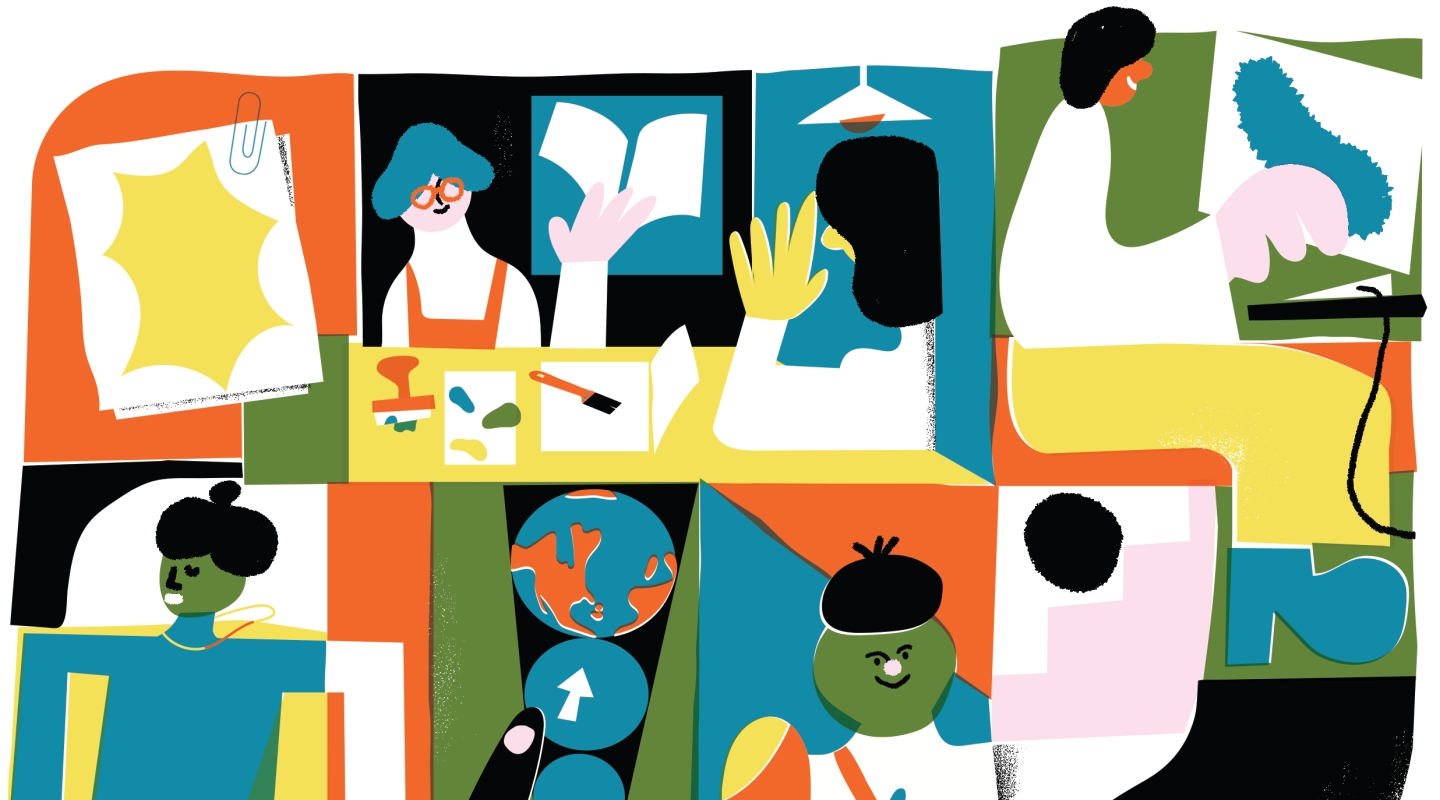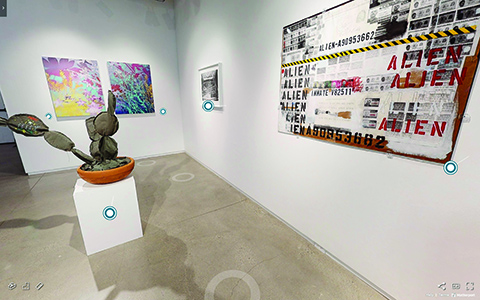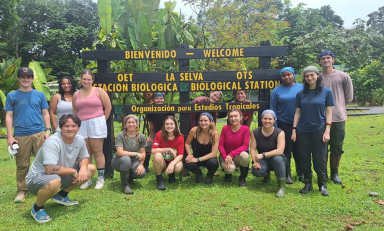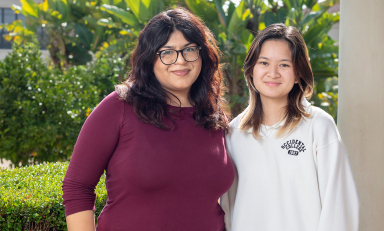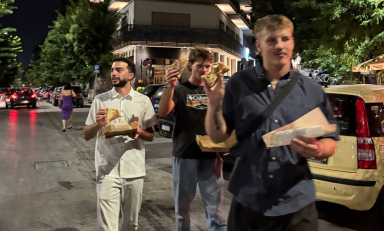Introducing new courses, embracing technology, and challenging traditional approaches to classroom pedagogy, Oxy faculty reimagine the remote learning experience
We all have those recurring dreams about college—the ones where you didn’t show up for class all semester, or didn’t study for the test that your grade depends on. Or that it’s the start of the fall semester in the middle of a pandemic and you’re logging into your classroom—wait, come to think of it, you’re wide awake. This is no dream.
“We just had our first day of classes,” reports Sabrina Stierwalt, assistant professor of physics, “and I was nervous about little things—will the webcam work this time? Will I accidentally click ‘End Meeting for All’ in our Zoom classroom—my new recurring nightmare?
“But as soon as we got into the rhythm of class, I could tell these Oxy students had shown up ready to take all of this on together,” she continues. “Everything has been turned upside down for them—for all of us—but they all showed up ready to roll up their sleeves and get to work. I’m so impressed by their resilience.”
Resilience has been a byword of the fall semester—likewise, adaptability and creativity. Well before the College announced July 10 that all instruction would be remote for the fall semester—and that, with limited exceptions, Oxy would not be bringing students back to campus—faculty and administrators were making plans for a remote learning curriculum. Stierwalt, along with many of her peers, took advantage of the workshops offered by Oxy’s Center for Teaching Excellence throughout the summer. “We did a lot of brainstorming and planning not just how we can use technology to re-create the parts of in-person class we want to keep,” she says, “but also how to inspire creativity in this remote environment.”
Before coming to Oxy last fall, Stierwalt worked on producing virtual reality content for NASA. Last year, her classes borrowed VR headsets from the library and went on physical field trips to “the fantastic piece of Los Angeles history that is Griffith Observatory.” With neither of those options available this fall, she worked with Oxy’s Center for Digital Liberal Arts (CDLA) to develop new lessons that incorporated VR experiences. Then she mailed each student in her Astronomy course (a physics class for non-physics majors) their own Google cardboard virtual reality headset prior to the start of the semester. Once they download an app and pop their smartphone inside, she says, “The universe is theirs to explore.”The sudden switch to remote learning last March created a mad dash for faculty to quickly pivot their coursework to the virtual space. To be asynchronous (prerecorded, that is) or synchronous (live and interactive)? That was the question for many.
In Stierwalt’s case, remote learning “has made me think more about how we spend our precious class time together. I’ve moved most of my lecturing to prerecorded videos that students can watch before they come to class. This frees up class time for discussions and small-group work where we can go into the material more in depth. This way I’m even taking advantage of the remote aspect rather than trying to push through in spite of it.”
During the first week of classes, Oxy logged more than 4,000 Zoom meetings—1,096 of them a single day. (That doesn’t count the number of meetings on BlueJeans, Oxy’s secondary platform.) “The numbers for Zoom are just astounding,” says James Uhrich, vice president for information technology services and chief information officer.
With the notable exception of labs tied to science classes, the fall curriculum at Oxy is remarkably intact. In fall 2019, the College offered 625 courses, all of them in person. This fall, Oxy is offering 555 courses, all of them remote. But pedagogy never stands still, not even in the middle of a pandemic: Oxy professors are teaching 48 new courses this fall. A number of them are tied directly to the coronavirus, while others are using technology to expand their academic reach.
While COVID-19 put the brakes on Oxy’s study abroad program this fall, other activities have persevered, adapting to the circumstances. Under new director Cynthia Rothschild, the Kahane United Nations Program is taking place virtually for the first time in its 35-year history, with a cohort of 18 students working remotely for nine different U.N. initiatives.
Student groups jumped into the planning as well. Oxy’s Student Leadership, Involvement, and Community Engagement (SLICE) office staged its Fall Involvement Fair virtually August 27, and the Intercultural Community Center (ICC) facilitated a series of social gatherings for various identity groups at the College to kick off the semester in September. From Glee Club performances to Dance Production auditions, the student experience has adapted to the virtual world. “When we talk about online initiatives, we’re taking the same care that we would have if students were here in person,” says Marcus Rodriguez, director of SLICE.
“Our hope and our vision for the fall is to create dynamic opportunities for students to connect with each other, faculty, staff, and alumni to make sure that we build a network of folks who can support each other,” adds Chris Arguedas, ICC director.
Since the end of the 2020-21 school year, “I’ve had tons of meetings with colleagues where we just share ideas, or we throw around something that we designed in the spring,” says Clair Morrissey, associate professor of philosophy and department chair. “The big idea is it doesn’t matter what the mode of communication is—it matters what we’re doing with each other.”
Embracing the remote learning model, four programs are being offered this fall—Arts in Los Angeles, PPE Portrait Project, California Environment and Conservation Corps, and Computing IRL—as part of the new Oxy Immersive Program. Individual programs vary between eight and 14 credits and explore a specific topic of study through a cluster of coursework and community-based or internship components. Each course is team-taught and reserved for first-years.
For her part, Morrissey is teaching a Core Studies Program class titled Being With People as part of the Oxy immersive semester PPE Portrait Project led by Art Professor Mary Beth Heffernan (who is teaching both an arts course and an internship community practice-based course). In Morrissey’s CSP, “We’re focusing on the relationship between healthcare workers and their patients in particular, because that’s the context for the PPE Portrait Project: How do you stand with respect to each other? How do we relate to each other? What do we owe each other?”
The Arts in L.A. Semester is designed to bring students into contact with “one of the most vibrant, internationally important and powerful artistic communities in the world,” says Amy Lyford, professor of art, who developed the class with Sarah Kozinn, associate professor of theater. “The arts fully shape and drive many of the ways that people work, live, and advocate for social change and social justice in this incredible international city.”
“The Arts in L.A. semester is really the best of a liberal arts education,” Kozinn says. “Through the arts, we see responses to vast questions about the world—issues about social justice, science, politics, and injustice.”
Case in point: Oxy Arts’ In Plain Sight project WE LIVE! Memories of Resistance, a group exhibition of 14 artists running through November 29, examines immigration detention facilities around the country through works of art. And the plays in Kozinn’s course range in subject matter from viruses and epidemics to science and even police violence. “We look at visual culture not as an accessory to life,” she says, “but as integral to how we view, and can change, the world.”Both professors view art as an oasis in uncertain times. “We understand the suffering and anxiety and a kind of upended world that are impacting all of our students and also ourselves,” Lyford says—and Kozinn adds: “One of my tenets of this semester is through this work to find community and joy. I think we can, and we will.”
In preparing for the fall semester, “I have spent a lot of time thinking of ways to make my classes engaging, thought-provoking, and relevant,” says Jessica Dirkes, who joined the College last year as adjunct assistant professor of public health. “Living through the biggest public health crisis of our lifetime, while also teaching public health, has underscored the relevance.”
Public health is “grounded in science, inherently political, and frequently at the center of controversy,” she says. “One thing I have focused on, in terms of facilitating engagement in this virtual world, is how to offer a platform for students to connect and discuss with each other.”
COVID-19 “is a real-time case study that we will discuss throughout the semester and in the years to come,” adds Dirkes, who is teaching Introduction to Public Health and Women’s Health this semester. But that doesn’t mean other health problems have gone away, she says—in fact, the pandemic has exacerbated some health problems and highlighted the inequity that many communities face. “In my classes we will draw connections between the underlying causes of health inequity and what we are witnessing with the disproportionate impact COVID-19 is having on communities of color.”
Over the summer, Dirkes worked with seven Oxy students who were selected for paid public health internships at various organizations across Los Angeles, gaining hands-on experience in the field. “It is a good time to be interested in public health,” she says. “I hope that one outcome of this disaster is a shift in how the U.S. prioritizes public health—and in that regard, I look forward to a new generation of bold and courageous public health leaders.”
Speaking as an education and public health professional, Dirkes encourages students to keep working toward their goals. “We have had to hit pause on so much in our lives,” she says, “but not on our chance for learning, thinking, and growing.”
Illustration by Adrian Forrow
Above: In partnership with the In Plain Sight Coalition, Oxy Arts created a virtual 3-D exhibit for WE LIVE! Memories of Resistance, a group exhibition of 14 artists. “By embracing memory as a living source of reinvention and transformation, these artists scrutinize the underlying conditions of immigrant detention to inspire acts of resistance that challenge our culture of incarceration and racial injustice,” write curators Kyle Stephan and Paulina Lara.

